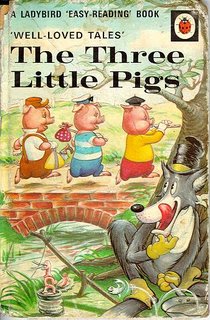
Well I'm finally back in Long Beach and back to this blog, which has been quiet for the past couple of weeks. I'm not sure anyone has noticed, but if so, sorry. Someday I'll share a long tale about the disaster that awaited us in Coral Springs, Florida a couple of weeks ago... Anyhows, I've been catching up with my e-mail, and found a note from
Tarak Barkawi concerning a November 2nd
New York Times profile by C.J. Chivers of a horrible day in the life of Petty Officer Third Class Dustin E. Kirby, a Navy trauma medic assigned to the Second Mobile Assault Platoon of Weapons Company, Second Battalion, Eighth Marines. The moving
article details Kirby's effort to save a Marine shot by a sniper, but was of interest to me when Kirby described some of his training to the reporter:
In one course, an advanced trauma treatment program he had taken before deploying, he said, the instructors gave each corpsman an anesthetized pig.“The idea is to work with live tissue,” he said. “You get a pig and you keep it alive. And every time I did something to help him, they would wound him again. So you see what shock does, and what happens when more wounds are received by a wounded creature.”
“My pig?” he said. “They shot him twice in the face with a 9-millimeter pistol, and then six times with an AK-47 and then twice with a 12-gauge shotgun. And then he was set on fire.”
“I kept him alive for 15 hours,” he said. “That was my pig.”
“That was my pig,” he said.
Given the well-known similarities between humans and pigs the use of the latter in this manner is not surprising. Neither is the response by animal welfare and animal rights groups, which point to the many alternatives that exist to using animals in this manner. For example, check out this reply to the NYT article by the Humane Society of the United States
here. Dawn McPherson of the HSUS reminds us of the outcry during the Reagan Administration about the use of dogs in this type of medical training. Because of the comments they have received after the publication of this NYT story, the Human Society has written to Robert Gates, the U.S. Secretary of Defense, and to key members of Congress to call for an end to this inhumane training.
By the way, the photo above is by Joao Silva for
The New York Times.
 While in a short line at the local convenience store today I happened to see this California Lottery scratch-off game. For a buck, it was hard to resist. The cheesy-looking pig here is happy with mud and money, but there is a much longer association of pigs with luck, something most often seen in vintage postcards, especially German ones. You can see a few examples here, where there is a brief discussion of pigs as lucky charms. Alas, my ticket wasn't so lucky--I got nothing...
While in a short line at the local convenience store today I happened to see this California Lottery scratch-off game. For a buck, it was hard to resist. The cheesy-looking pig here is happy with mud and money, but there is a much longer association of pigs with luck, something most often seen in vintage postcards, especially German ones. You can see a few examples here, where there is a brief discussion of pigs as lucky charms. Alas, my ticket wasn't so lucky--I got nothing...
















